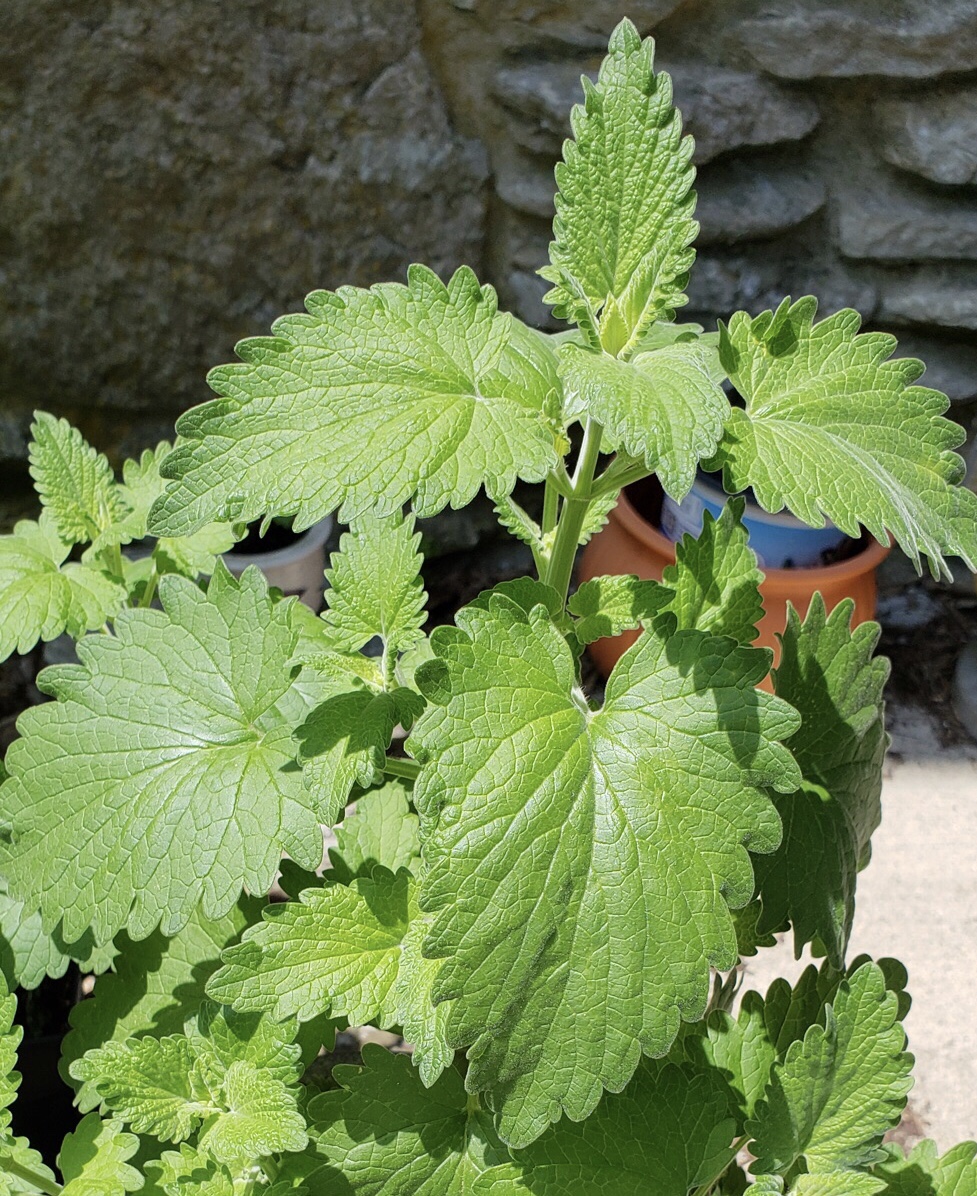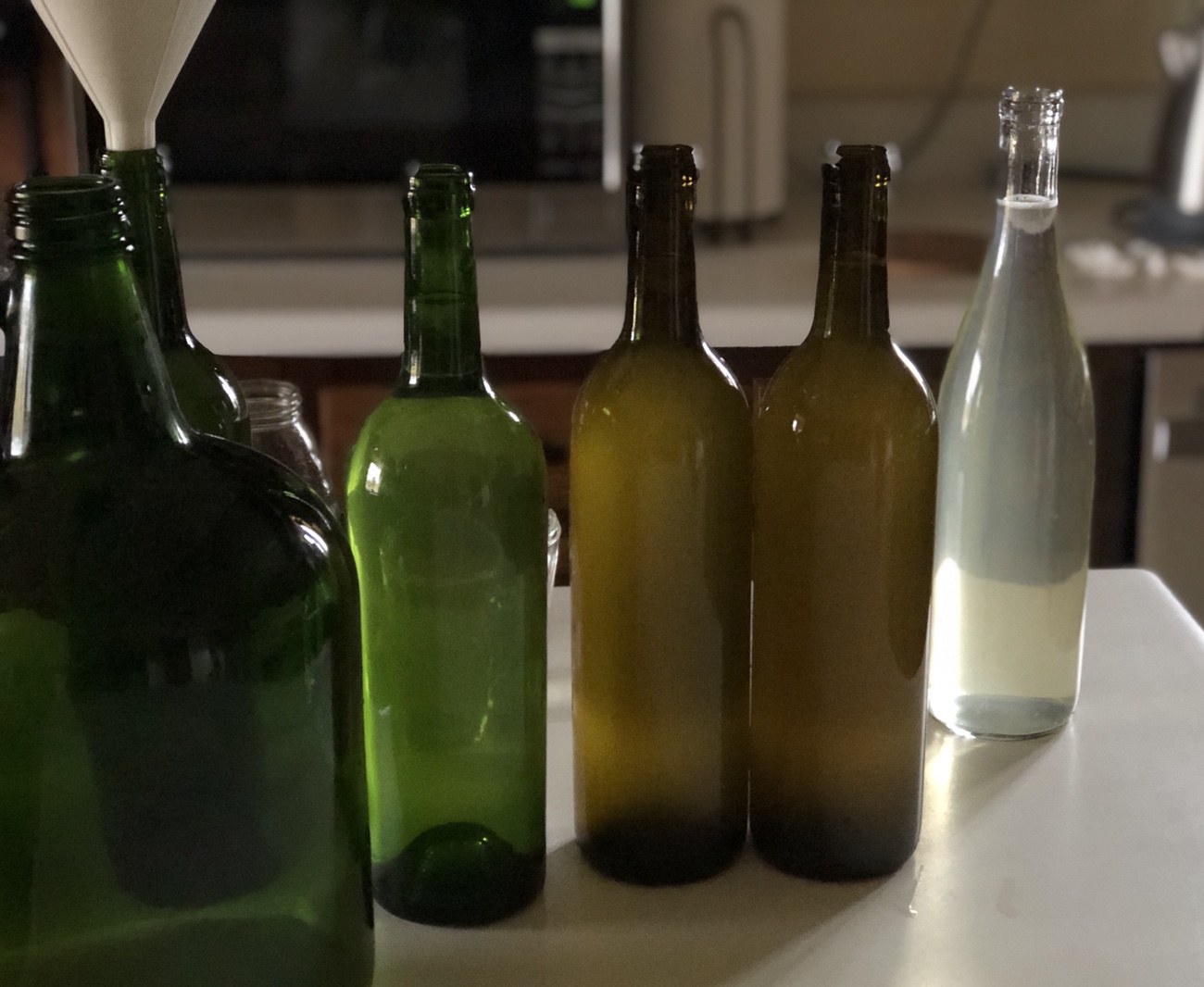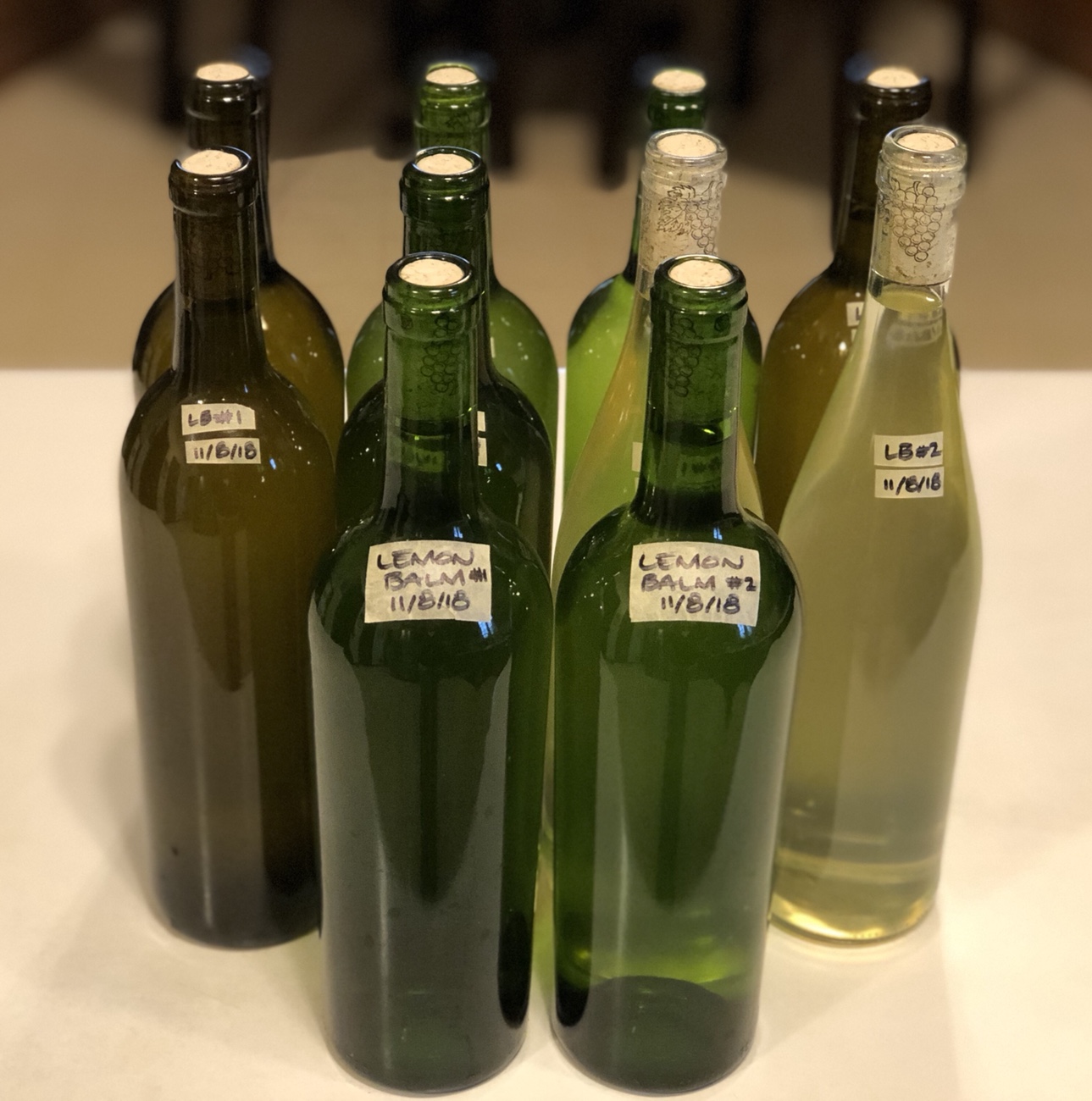
It may be freezing outside, but I’m bottling the essence of summer: the lemon balm wines are ready!
If you recall from the earlier post, I made two batches with the lemon balm I harvested. Batch #1 used readily-available ingredients (lemon juice for acid, black tea for tannin) and batch #2 used traditional winemaking ingredients like acid blend, powdered tannin, and yeast nutrient.
Batch #2 seemed more active than #1 in the initial fermenting phase. Both batches, initially, had typical herb wine opacity but cleared reasonably well with time, with just a slight haze; if you prefer absolutely clear wine, a fining agent would likely help.
Both batches had already been racked to clean secondaries previously, but batch #2 still had a surprisingly thick layer of yeast in the jug. While I have siphons, I prefer to pour – slowly and carefully – the wine into waiting bottles. The key is to avoiding jiggling the jug and stirring up the sediment at the bottom.

Batch #1: more pronounced lemon-herbal flavor, less sweet, lemony aroma. The lemon balm really comes through.
Batch #2: subtle hint of fruit and lemon-herbal flavor. Still enough residual sweetness that backsweetening isn’t necessary, verging on dessert wine.
Of the two, I personally prefer batch #1. I think the lemon slices in the initial ferment boosted the lemon flavor, and it retained just enough sweetness to avoid the pucker factor. Batch #2 may improve with time in the bottle, but I’d reduce the sugar in future batches that use this recipe; make no mistake, though – it’s still a very pleasant wine.

Friends, if you have ample lemon balm and enjoy wine, try making lemon balm wine. It’s so tasty, it makes me want to turn my front yard into a big lemon balm garden. Cheers!


Comments are closed.